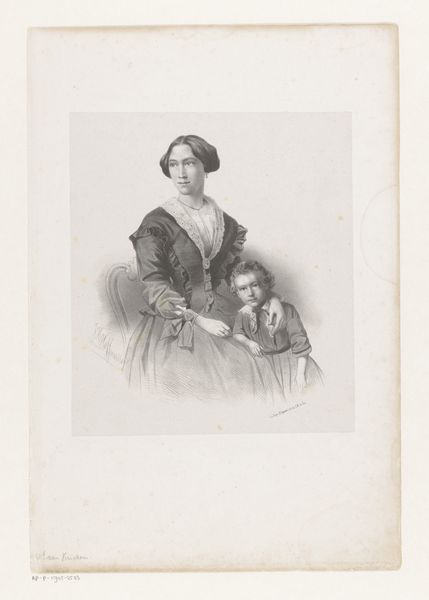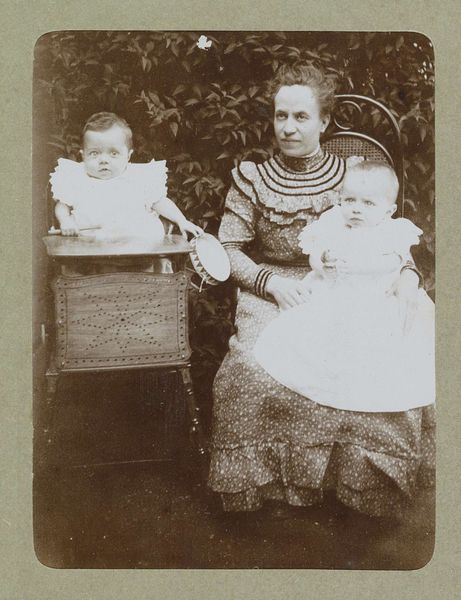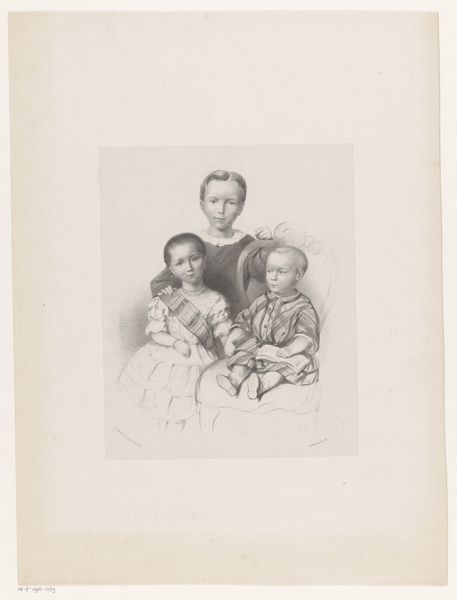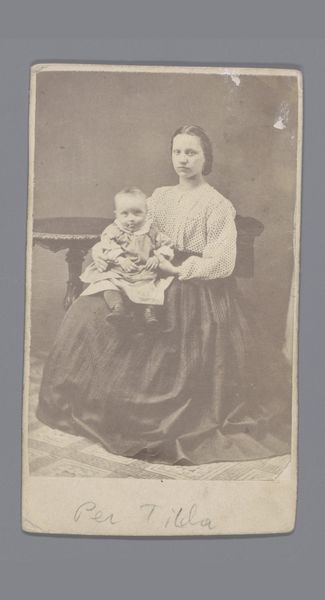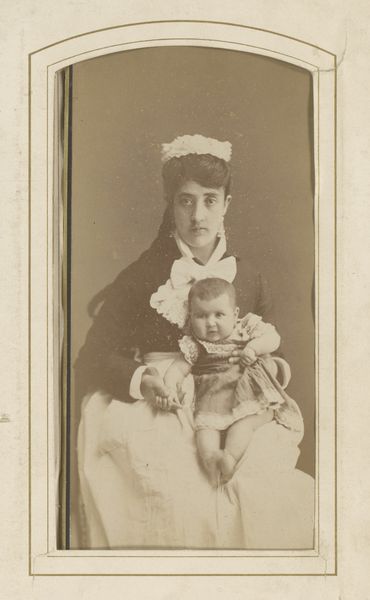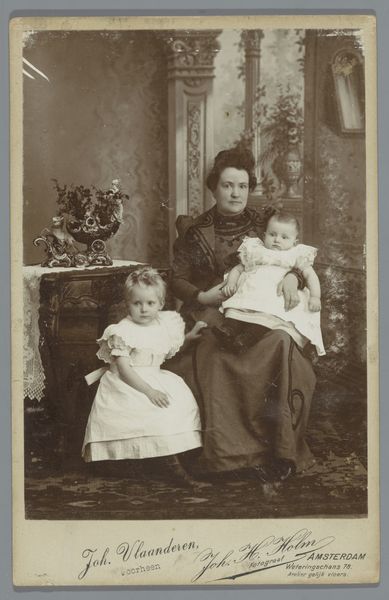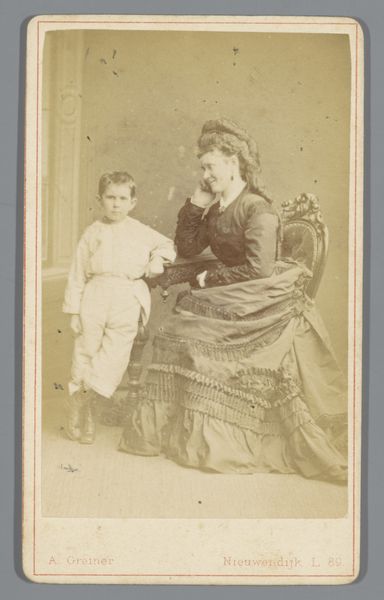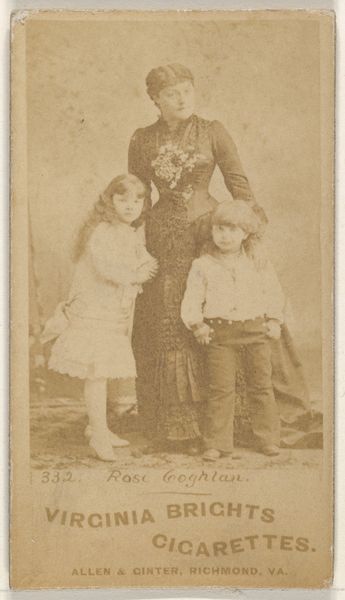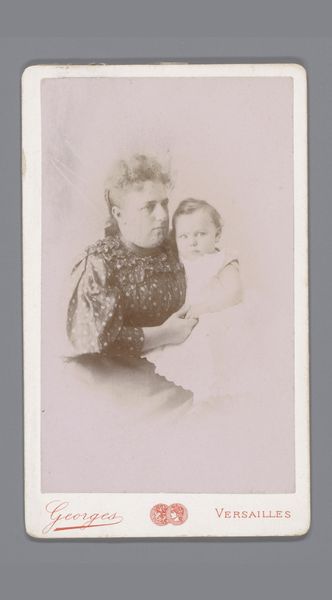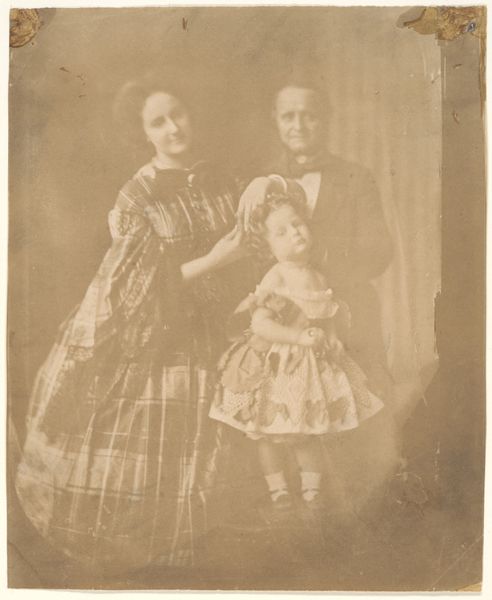
drawing, graphite
#
portrait
#
pencil drawn
#
drawing
#
pencil sketch
#
pencil drawing
#
graphite
#
genre-painting
#
academic-art
#
realism
Dimensions: height 450 mm, width 307 mm
Copyright: Rijks Museum: Open Domain
Curator: This drawing, titled "Portret van Johanna Henriëtte Rees-Lucassen," is a graphite work from sometime between 1851 and 1883. It depicts a woman seated with a young child. Editor: It feels… solemn. Like a posed photograph trying very hard to be a heartfelt moment. But there's something vulnerable in the woman's eyes that suggests a story beneath the surface. Curator: The stiff formality was very much part of the culture of portraiture then. These were often commissioned to project a certain image, weren’t about spontaneous joy. Portraits signified social standing and legacy. Think about who gets depicted and in what way. Editor: True. It's easy to forget these were status symbols. I wonder, though, did that rigidity ever frustrate the artists? You know, like being asked to capture the *idea* of a person, not the soul, all those corsets and stuffiness suffocating the real person. Curator: It would have varied! For some artists, adhering to those expectations was crucial to earning a living and gaining acceptance in artistic circles. The emphasis on Realism and Academic art shaped much of their artistic expression. Editor: Right, playing the game for patronage makes sense, if that’s the priority. Look, the detail is incredible—the way light plays on the fabrics, and the faces... The artist certainly had the skill. And I can still catch glimmers of character through all that graphite propriety. Curator: And that brings up fascinating questions: How does the very act of representation change through different hands, historical expectations, and even artistic styles? Each decision—the medium used, the pose chosen—becomes part of a complex story that shifts the politics of imagery and reflects larger social ideas about power and identity. Editor: Makes you wonder what stories that little kid sitting on her lap might have been able to tell about the real deal of family and expectations. It gives this quiet drawing some lingering resonance, really. Curator: Yes, makes me think a lot about public roles in museums and other artistic and social aspects. Editor: For me, there's an entire interior world bubbling right underneath a quiet surface. It’s almost… hauntingly relatable.
Comments
No comments
Be the first to comment and join the conversation on the ultimate creative platform.

